’24 Storm Update: Progress and Repairs Following Intense Winter Storms
Much accomplished – but plenty still to do – after intense winter storms walloped Acadia National Park.
April 2nd, 2025
Much accomplished – but plenty still to do – after intense winter storms walloped Acadia National Park.
April 2nd, 2025
BY SHANNON BRYAN
Acadia National Park still bears scars from severe winter weather in early 2024. Back-to-back mid-January storms brought intense winds and extremely high tides (the highest water levels recorded in Bar Harbor since the tide gauge was installed in 1947). Several park locations experienced significant damage – severe erosion, scattered rocks and debris, downed trees, and sections of coastal paths unceremoniously disappeared. While those storms packed an extraordinary punch, park managers were quick to respond.
Crews assessed areas for safety and shored up where they could, then began the detailed process of surveying and tracking the impact and prioritizing repairs.
“Given that we had limited resources, our trail crew had to completely redo their workplan, swapping out previously planned projects to work on cleaning up and repairing damage from the storms,” said Matt Outhier, chief of project management at Acadia National Park. “They were able to quickly pivot and focus on the park’s most-used trails, so they were safe and usable for summer.”
Deciding what, when, and how to repair is no easy feat. “These decisions don’t happen in a vacuum. They include people from multiple park departments – trails, maintenance, cultural/natural resources—ensuring we do the work mindfully,” Outhier said.
“Our ultimate goal is to make a fix once and have it last,” said Amanda Pollock, public affairs officer at Acadia National Park. “We’re always working to make good investment of Americans’ dollars.”
“We’re so grateful to Friends of Acadia. Without those donor funds, much of last year’s work would not have happened.”
In addition, Congress passed a supplemental appropriation this winter that allocates funding to the National Park Service for damage from extreme storms and natural disasters. Acadia National Park will receive some of that funding, enabling the park to tackle remaining damage.
More than 1,000 feet of trail washed out, and many trees were blown down during the storms. Repair work to reopen the trail last spring included two temporary boardwalks and stonework. While the work doesn’t look
temporary, more permanent repairs are planned in the next several months to shore up the path and improve its resiliency. Friends of Acadia funds helped support this work, and equipment purchased by Friends of Acadia in previous years, like the Canycom rubber track carrier, helped park crews get the work done.
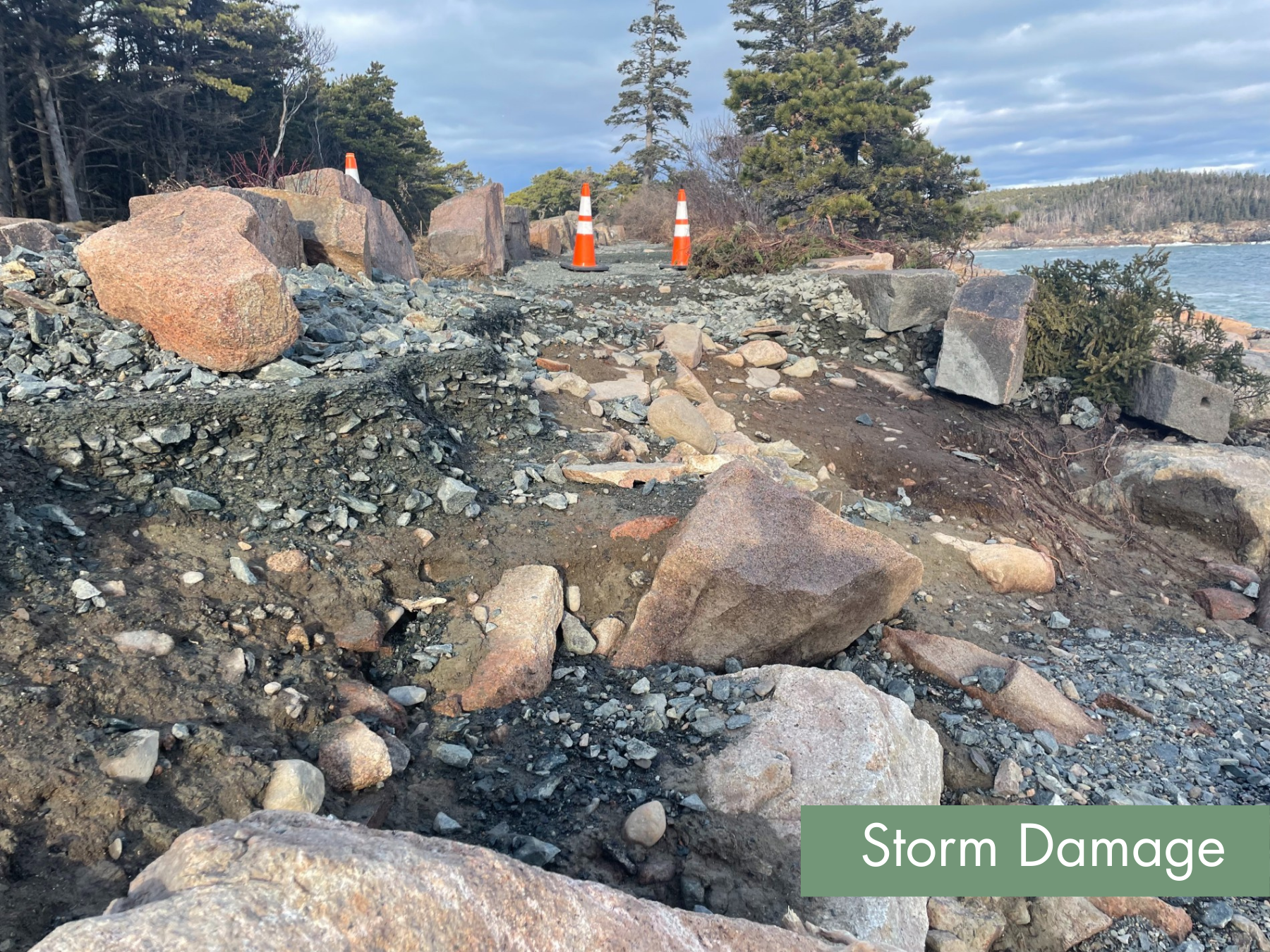
(NPS photo)
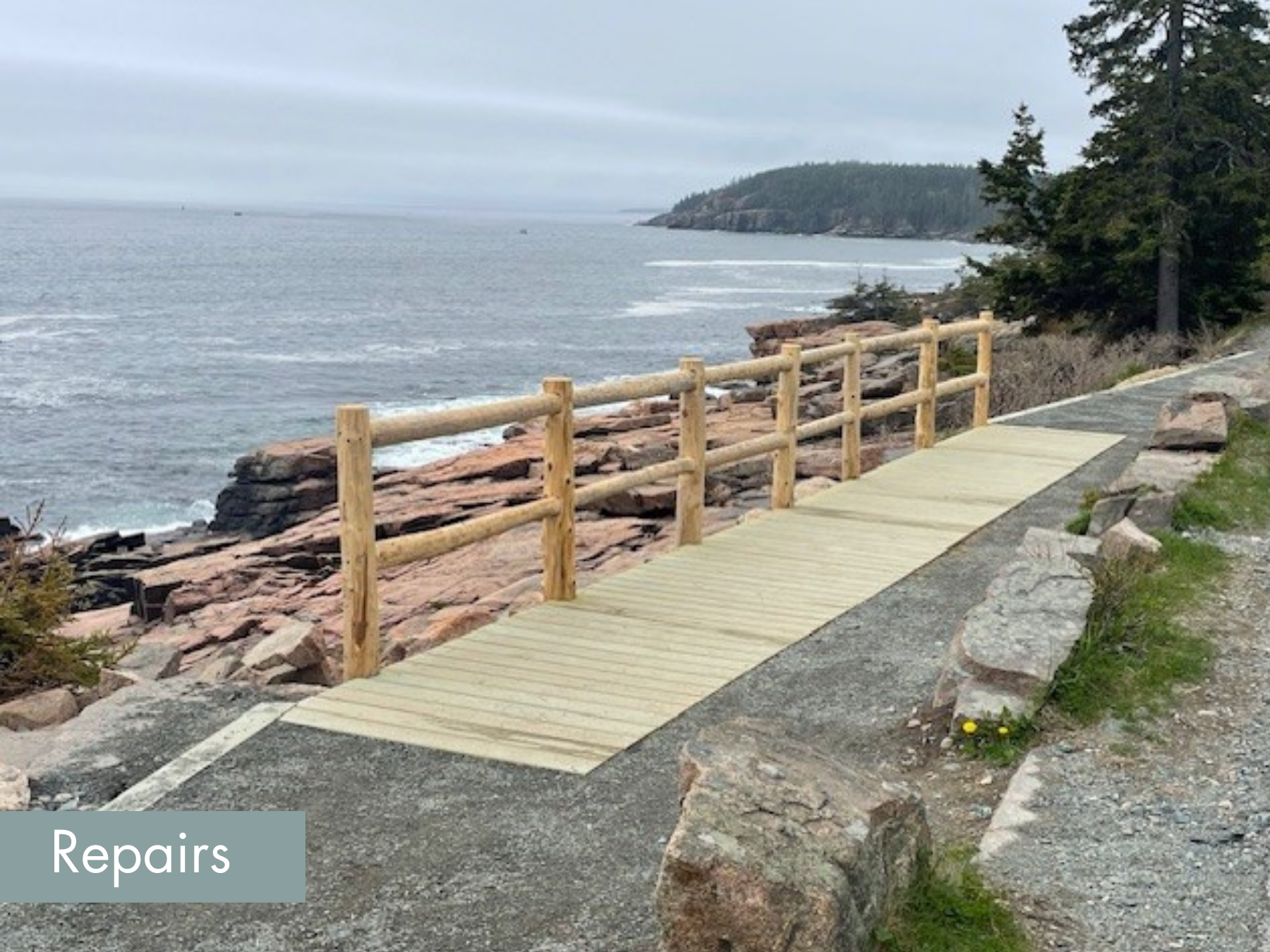
(NPS photo)
Storm winds blew down hundreds of trees in the campground and picnic area, destroyed and pushed picnic tables into the woods, and scattered cobble and debris. More than 700 trees were removed. Friends of Acadia and Acadia National Park co-led volunteer days to help clean up and carry out cut trees from the woods. Scattered rock was cleared and picnic tables replaced.
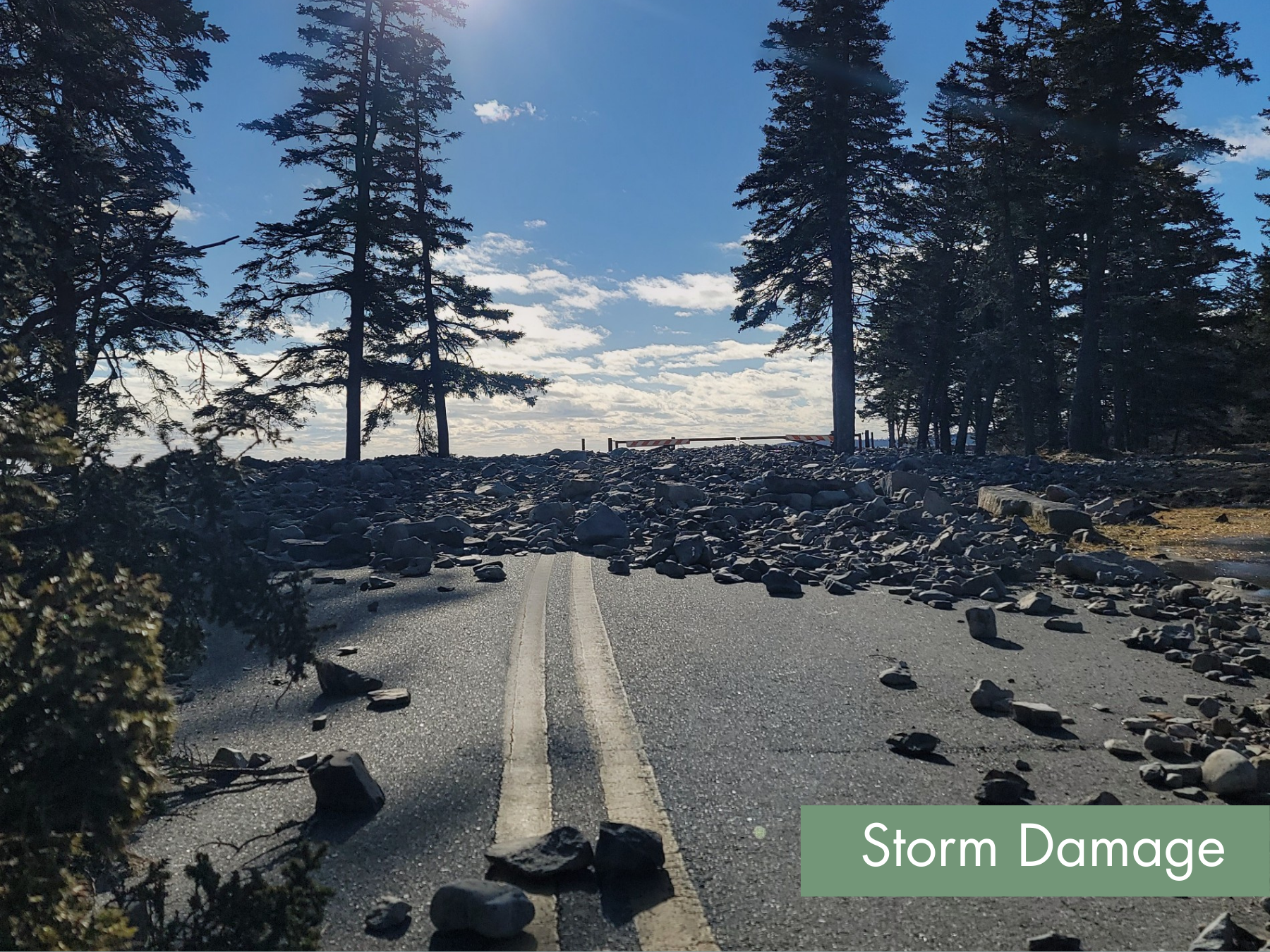
(NPS photo)
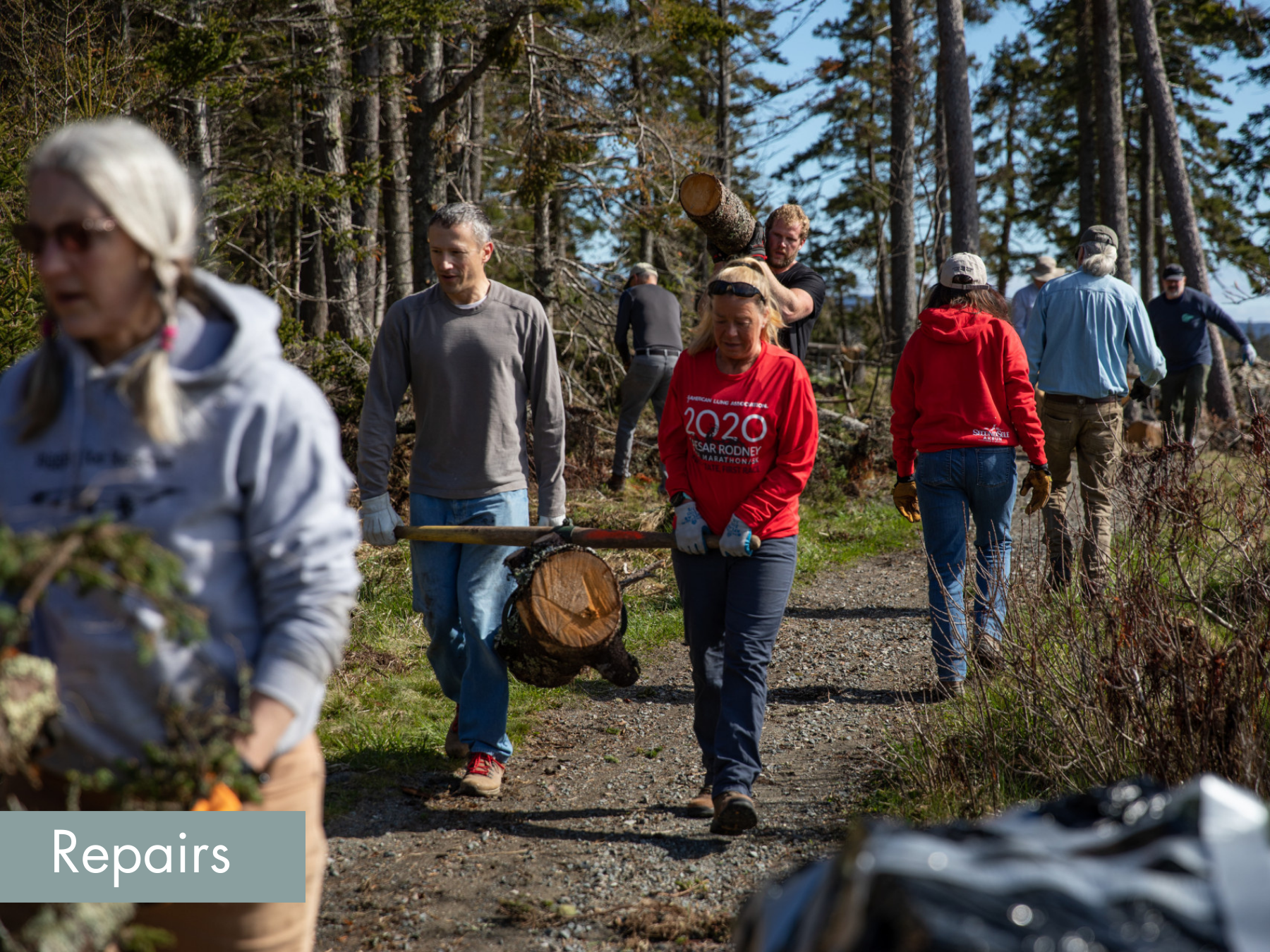
(Photo by Julia Walker Thomas/Friends of Acadia)
Wind tore off siding and waves undermined the foundation of the Blue Duck, a former ship’s chandlery built in 1853 that currently serves as home to Islesford Boatworks, a nonprofit community-based summer boatbuilding program on Little Cranberry Island (a.k.a. Islesford). The historic building’s foundation was restored last spring by Islesford Boatworks and a dedicated crew of community members.
Islesford Boatworks leases the building from the park and is responsible for its upkeep and repairs, although the dollars they pay in rent are kept in a pool of money dedicated to the building’s maintenance. That meant the Islesford Boatworks staff could immediately pull from those funds to begin repairs.
“It’s such a unique partnership,” said Pollock. “Because of the kind of work Islesford Boatworks does,
they were uniquely positioned to do that historical rehab. They have the skill set to get that done.
Rehabbing a historic building is a billion times harder than a modern building; it’s a huge asset to have them there.”
Outhier added that structural engineers from Redwood National Park helped draft a roadmap showing how to get those repairs done. “It’s a great success story,” he said. “Although there’s more work to be done long term.”
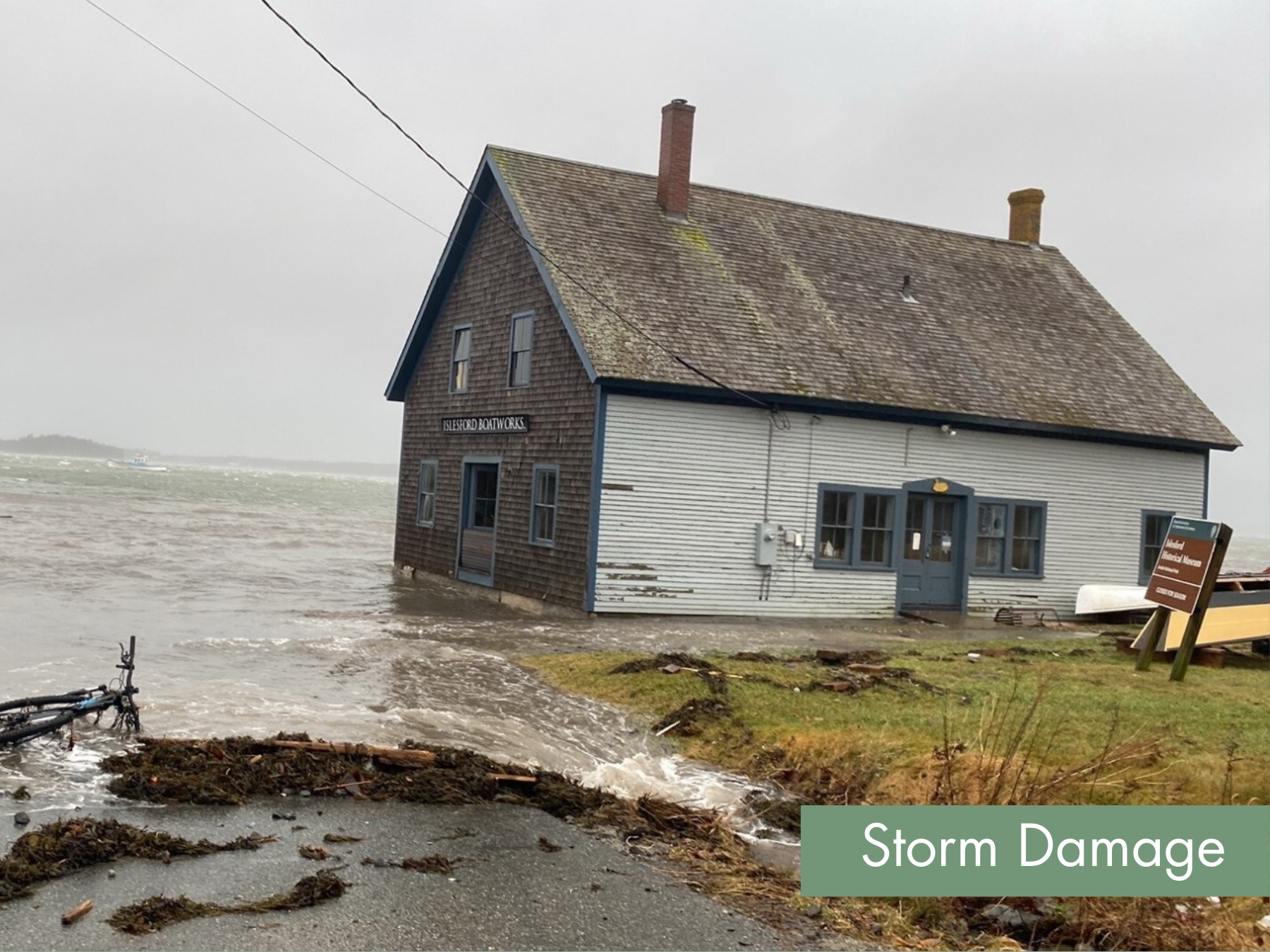
(NPS photo)
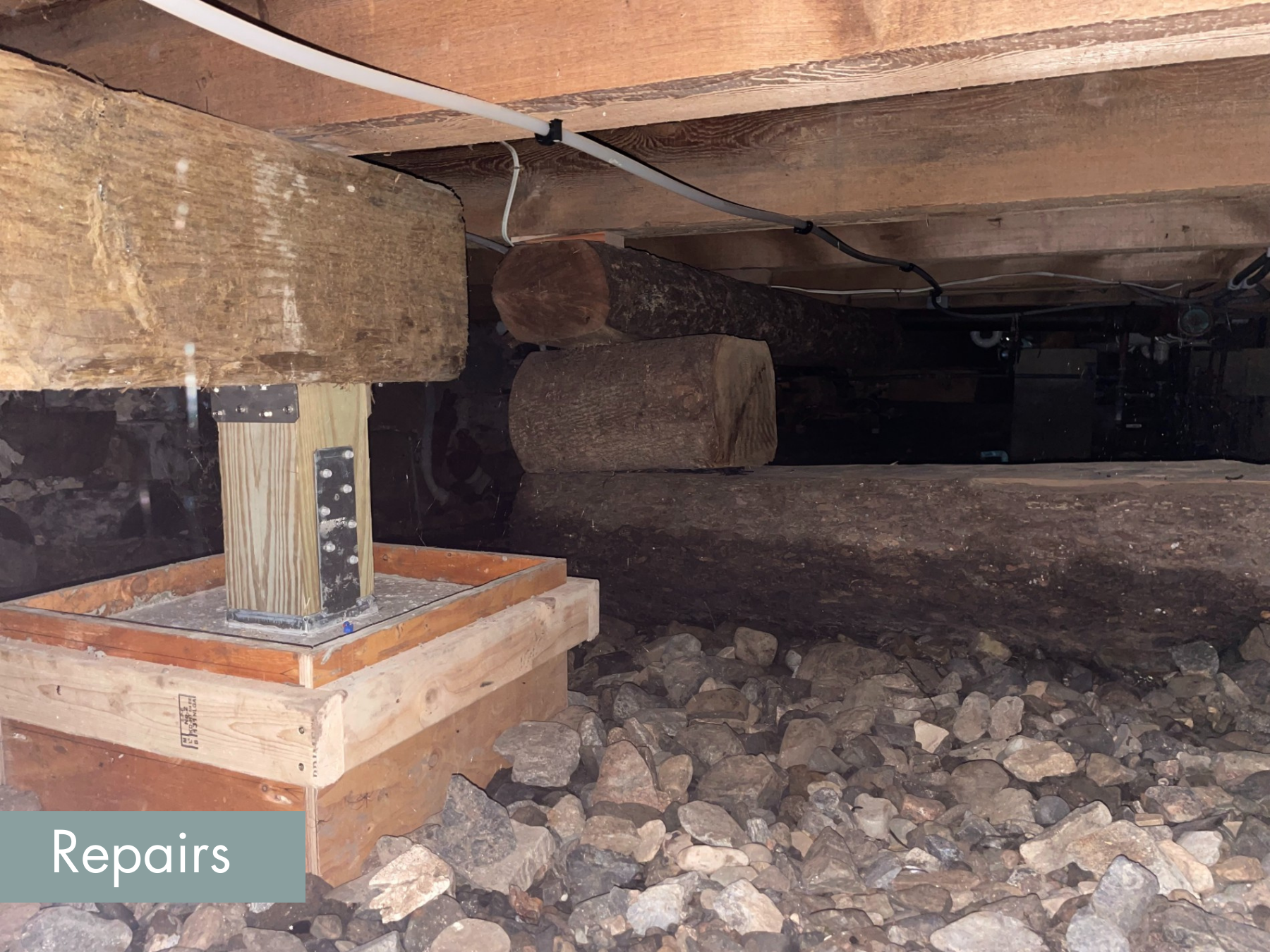
(Photo by Amanda Pollock/NPS)
Wave action broke apart a section of bog walk during the storms (carrying it off to Seawall) and winds tore an information wayside from its metal base and tossed it into the woods. Friends of Acadia and Acadia National Park trail volunteers repaired the bog walk, finding large sections of the original still in great condition, albeit displaced. They were able to place it back where it belonged. The wayside has not yet been replaced.
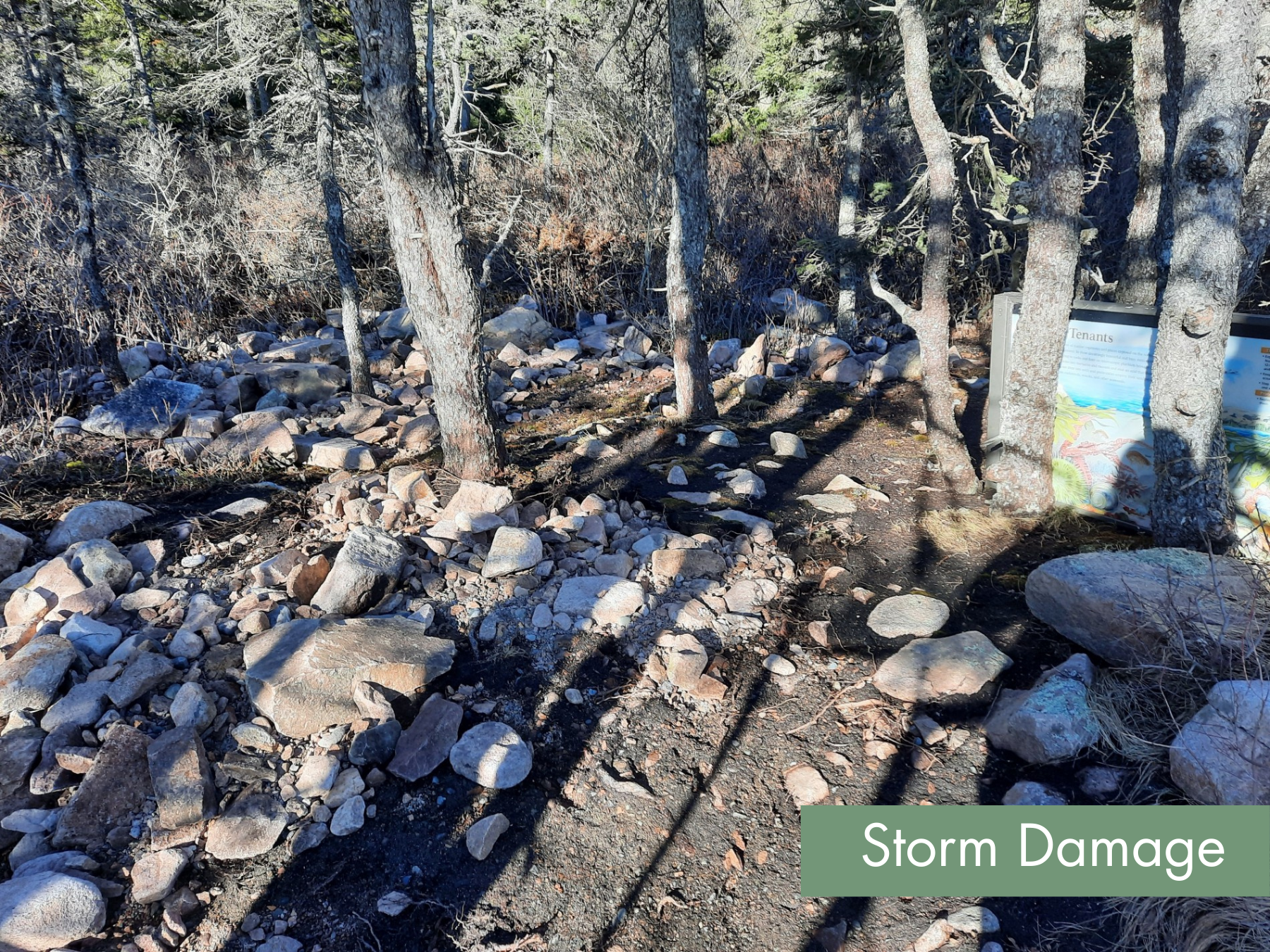
(NPS photo)

(Photo by Nikki Burtis/Friends of Acadia)
Waves overtopped the east side of Schoodic Loop Road, flooding back-barrier wetlands and moving cobble beaches and coping stones onto and across the road. Trees were blown down and debris washed up on shore; Frazer Point Picnic Area was flooded. Many of the roofs across Schoodic Institute’s multi-building campus experienced damage, in particular Rockefeller Hall. Roof repairs are ongoing, with plans to repair Schoodic Shores and Suites this spring. Friends of Acadia funds supported temporary repairs to Schoodic Loop Road, although longer-term repairs are needed. In addition, Friends of Acadia and Acadia National Park led volunteer days to help clean up scattered rocks, branches, and debris.
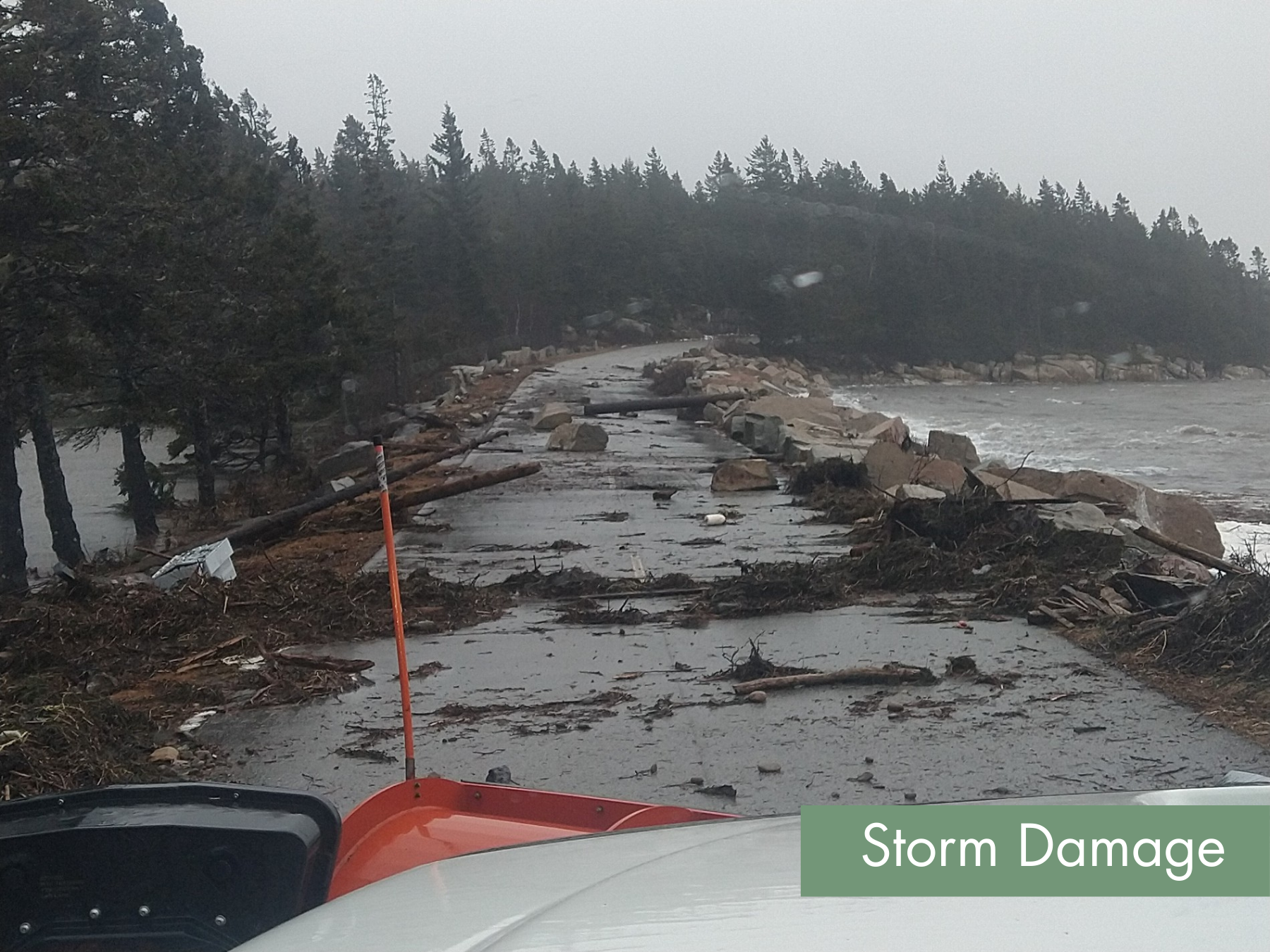
(NPS photo)
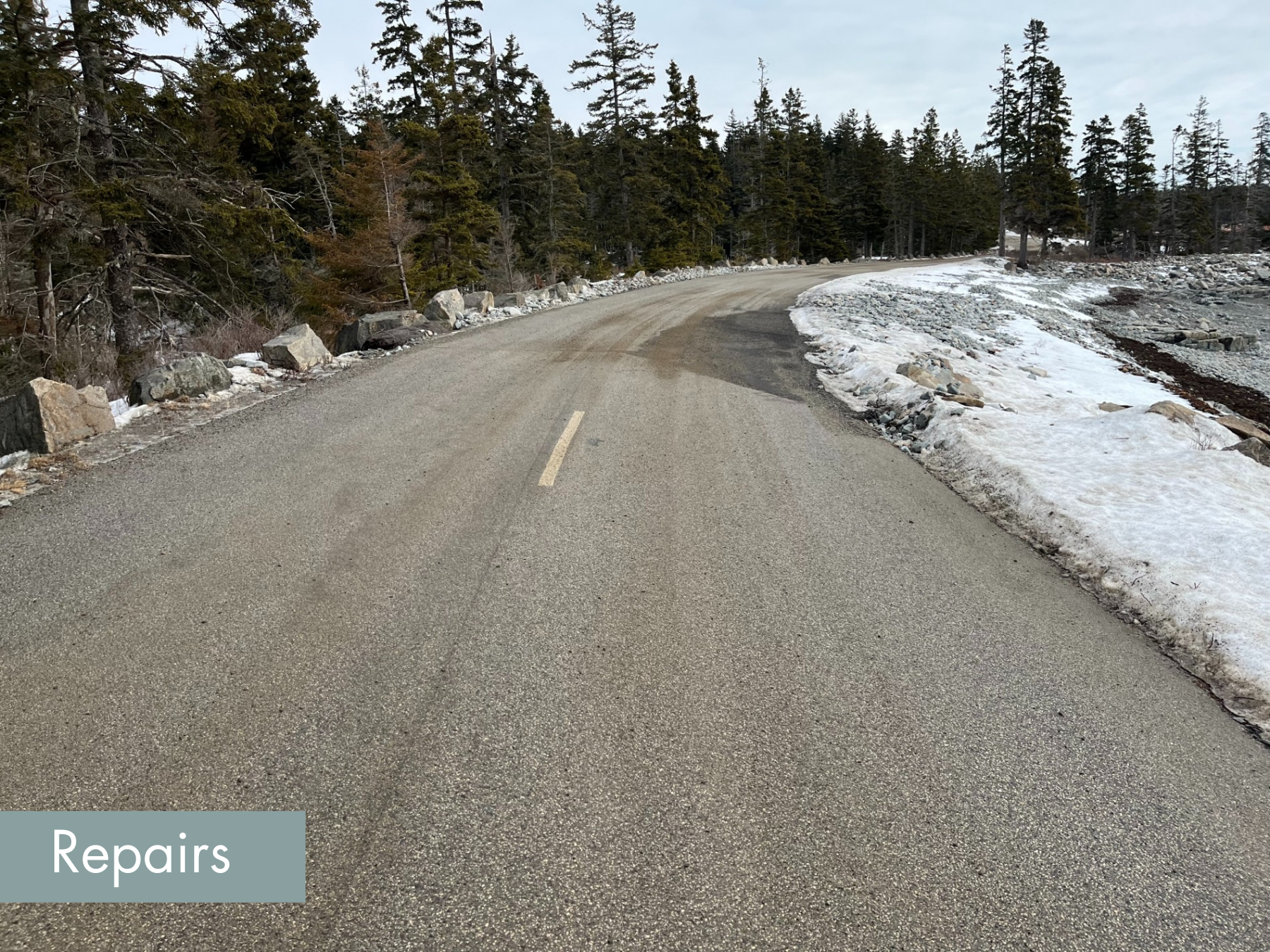
(Photo by Matt Outhier/NPS)
Sand dunes were significantly eroded during the storms, causing stabilization concerns with the stairs leading down to the beach. Emergency repairs were made under the stairs to stabilize them with funding support from Friends of Acadia. Park managers continue to assess the stairs for safety; they’re also considering what alternative access options might look like at Sand Beach.
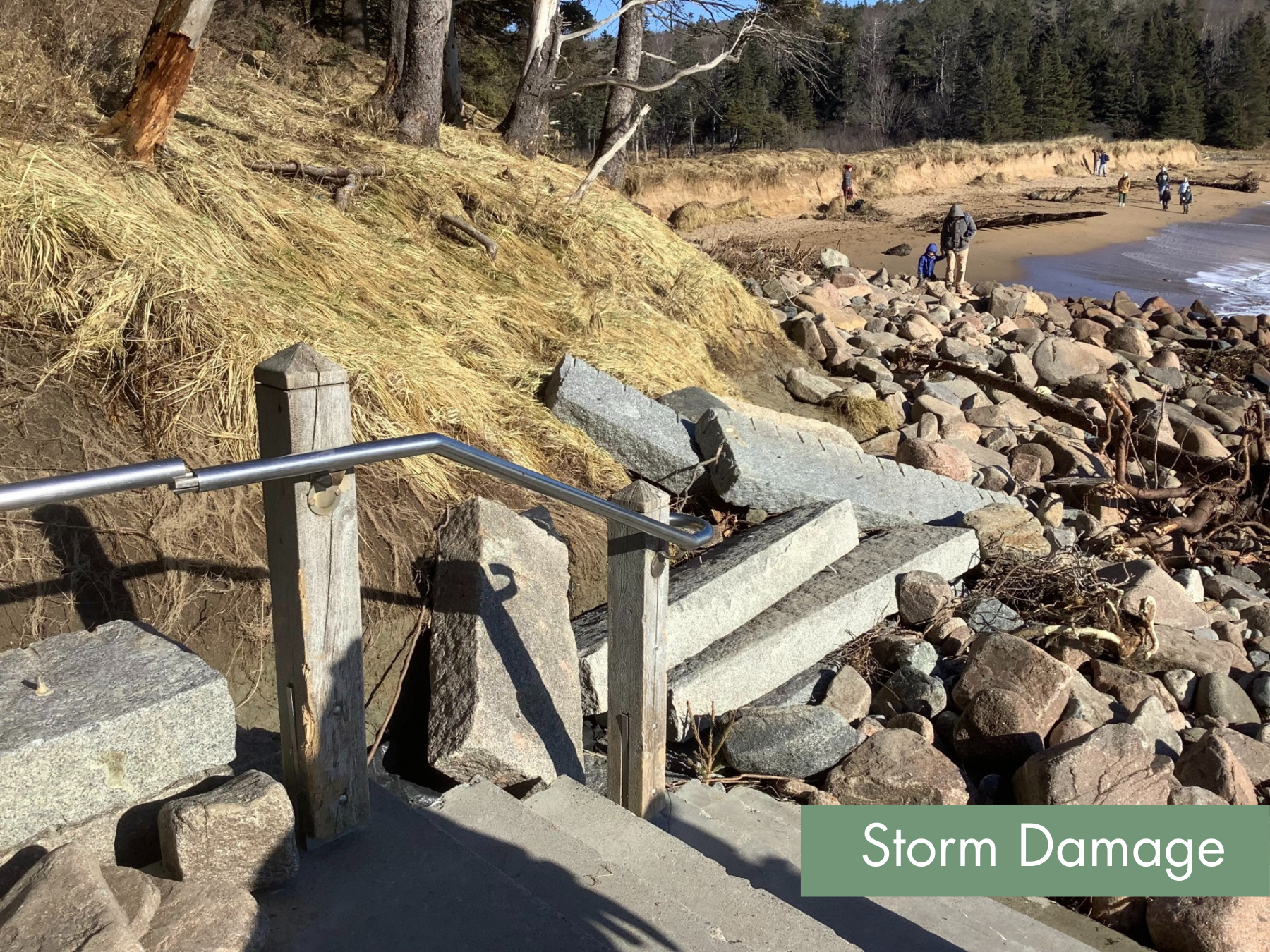
(NPS photo)
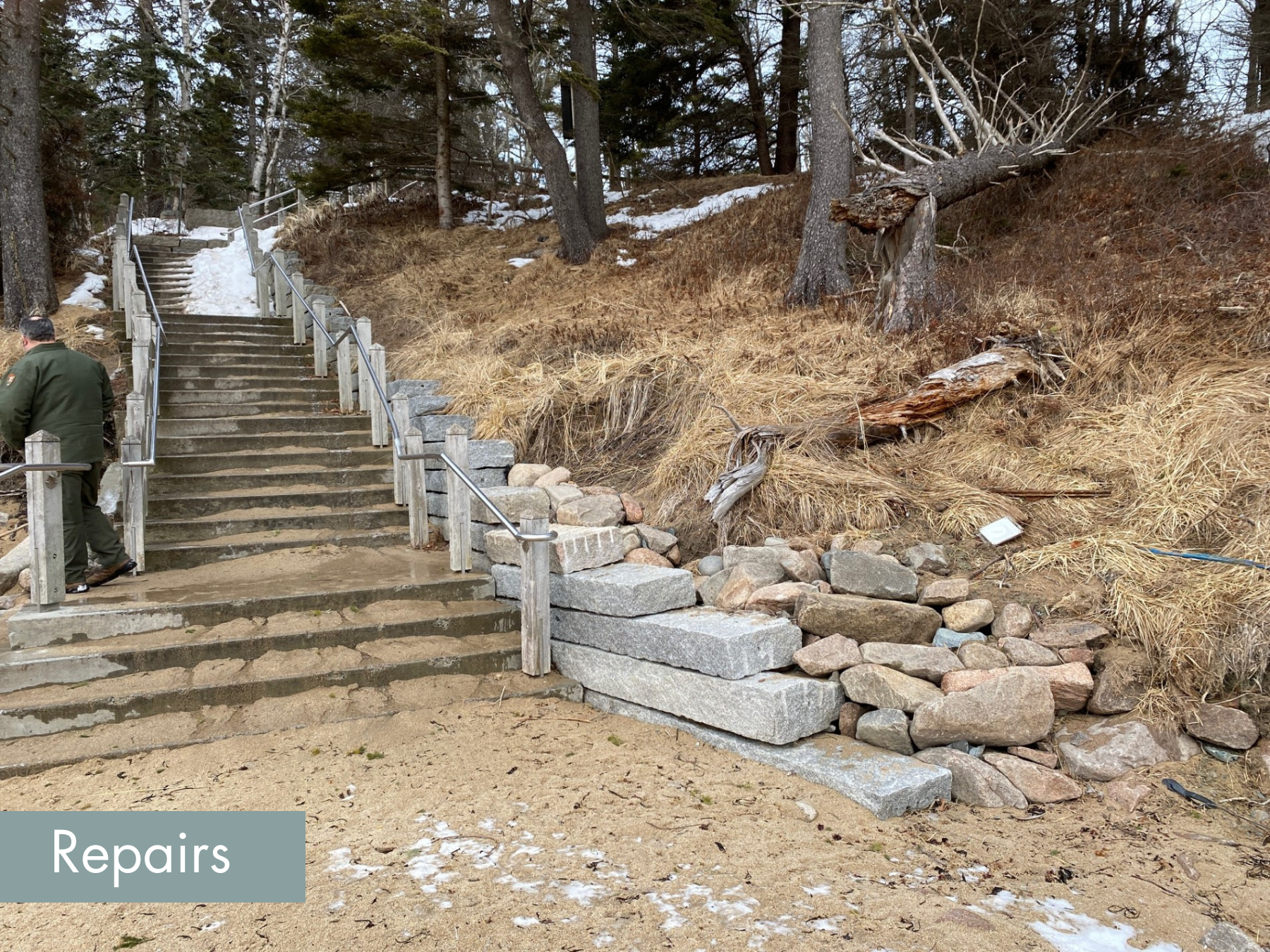
(Photo by Carriebeth Richards/NPS)
High storm surge ripped away a portion of the wooden stairs leading to Little Hunters Beach from Park Loop Road. Acadia’s trail crew and volunteers rebuilt the stairs. The park continues to assess the cliffside, which was heavily eroded.
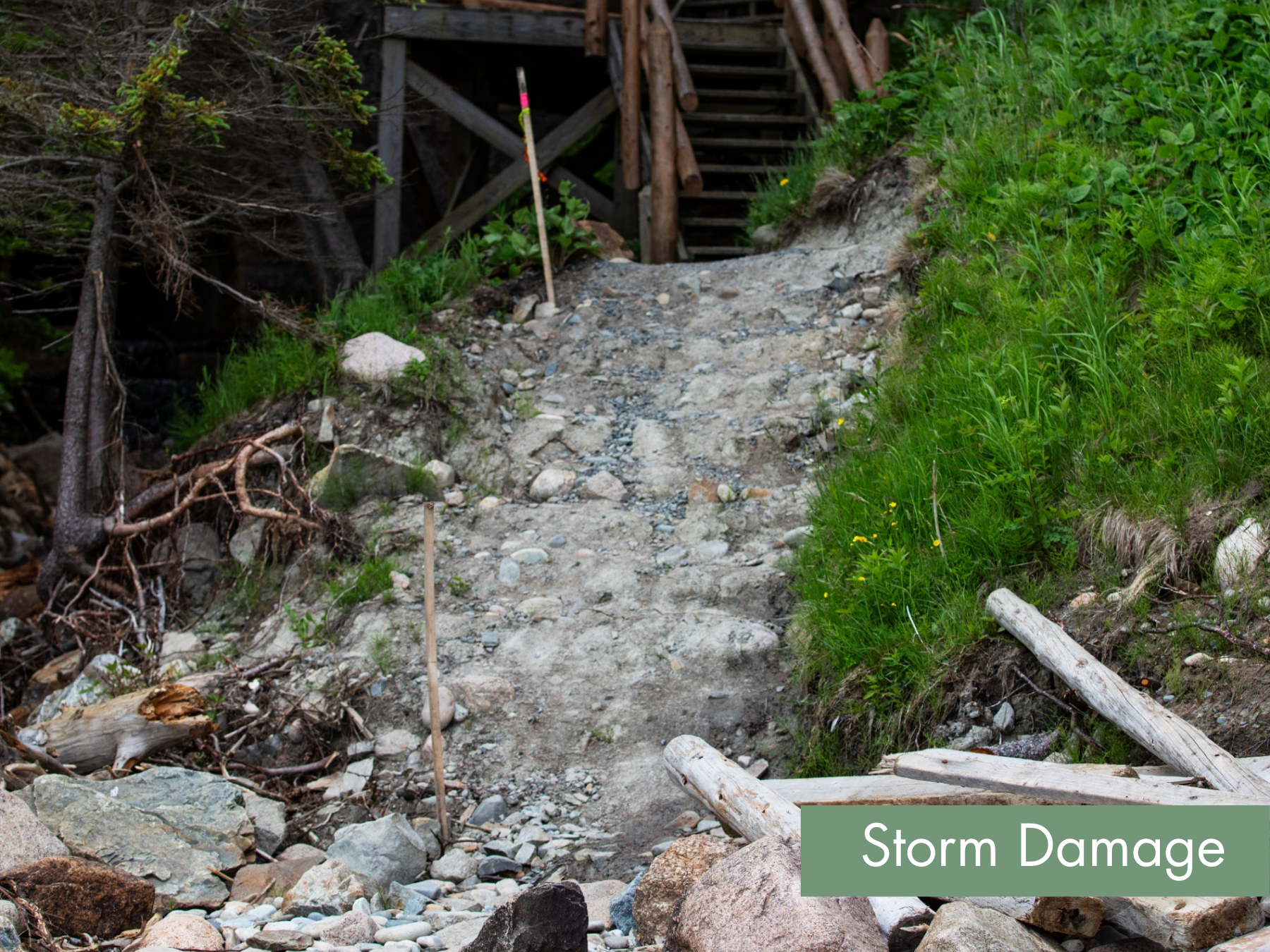
(Photo by Julia Walker Thomas/Friends of Acadia)
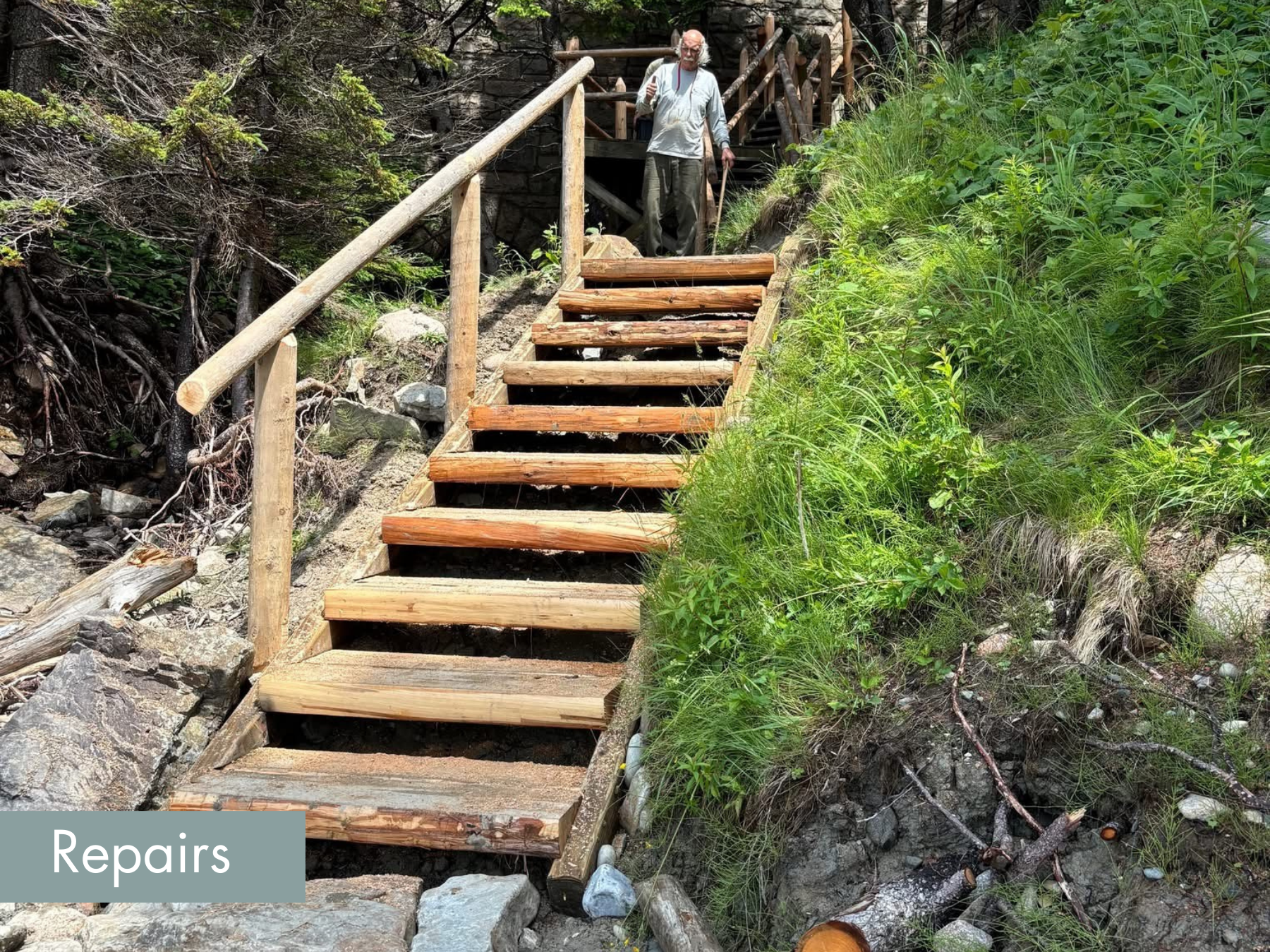
(Photo courtesy Mark Munsell)
Additional Coverage:
Taken by Storm – March 2024
Acadia is Changing, and Change is Messy – July 2024
SHANNON BRYAN is Friends of Acadia’s Content and Website Manager.